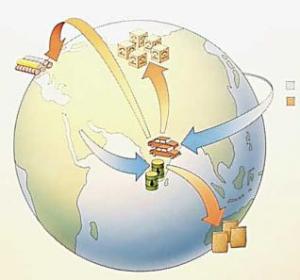 As construction and development continue at break neck speed in both China and India, both countries are dealing with a serious conundrum. Both China and India need to export goods and services to keep the economy growing and fiscal deficit from deepening, at the same time consumption and demand from domestic industries that are fueling the GDP growth has risen manifold increasing the need to keep goods and services within domestic lines.
As construction and development continue at break neck speed in both China and India, both countries are dealing with a serious conundrum. Both China and India need to export goods and services to keep the economy growing and fiscal deficit from deepening, at the same time consumption and demand from domestic industries that are fueling the GDP growth has risen manifold increasing the need to keep goods and services within domestic lines.
As a result of managing this fine balance of domestic growth and exports, India recently offered a slew of export incentives worth US$225 million to mostly labour intensive units such as garment, leather, handloom, and handicrafts, and some engineering sectors to help them weather out the fragile global economic recovery. According to the incentives announced, duty-free imports of capital goods will be permitted until end-March 2012 and an interest subsidy of 2 percent will be available to textiles, leather and jute industries for 2010/11. New Delhi will also continue to refund taxes paid as custom duties until end-June 2011.
However, at about the same time, the south Asian nation, has drastically cut iron ore exports and is seen to be reducing coal exports as domestic consumption rises. Iron ore and coal make up India’s major exports to China.
According to the Federation of Indian Mineral Industries, iron ore shipments from India, the world’s third-largest exporter, may fall as much as 38 percent this fiscal year because of higher taxes and freight charges, and a ban imposed by the state of Karnataka. Overseas sales may decline to as low as 66 million metric tons in the year ending March 31 from about 106 million tons a year ago. India accounts for 16 percent of China’s iron ore import market.
New Delhi is also expected to soon impose a competitive bidding process on coal mines in order to increase competition, productivity and see higher profits from the raw material, used in making steel and producing energy.
As seen by analysts, India is worried about its widening fiscal deficit and the growing trade imbalance with China. “We also have to be conscious of the need for and the inevitability of fiscal consolidation,” Trade Minister Anand Sharma announced recently. “Suffice it to note that the level of resources available today may not be available in the future.”
India has been saddled with a high fiscal deficit and aims to cut the deficit to 4.1 percent of GDP in 2012/13 from 5.5 percent projected for this fiscal year. India’s exports grew by 13.2 percent to 16.24 billion dollars in July from a year earlier, down sharply from a breakneck pace of more than 30 percent growth logged in April, May and June.
